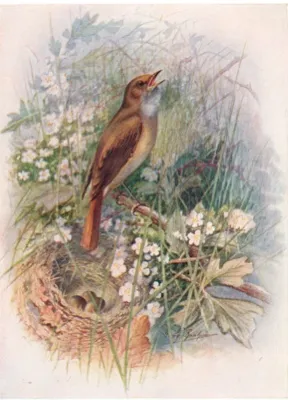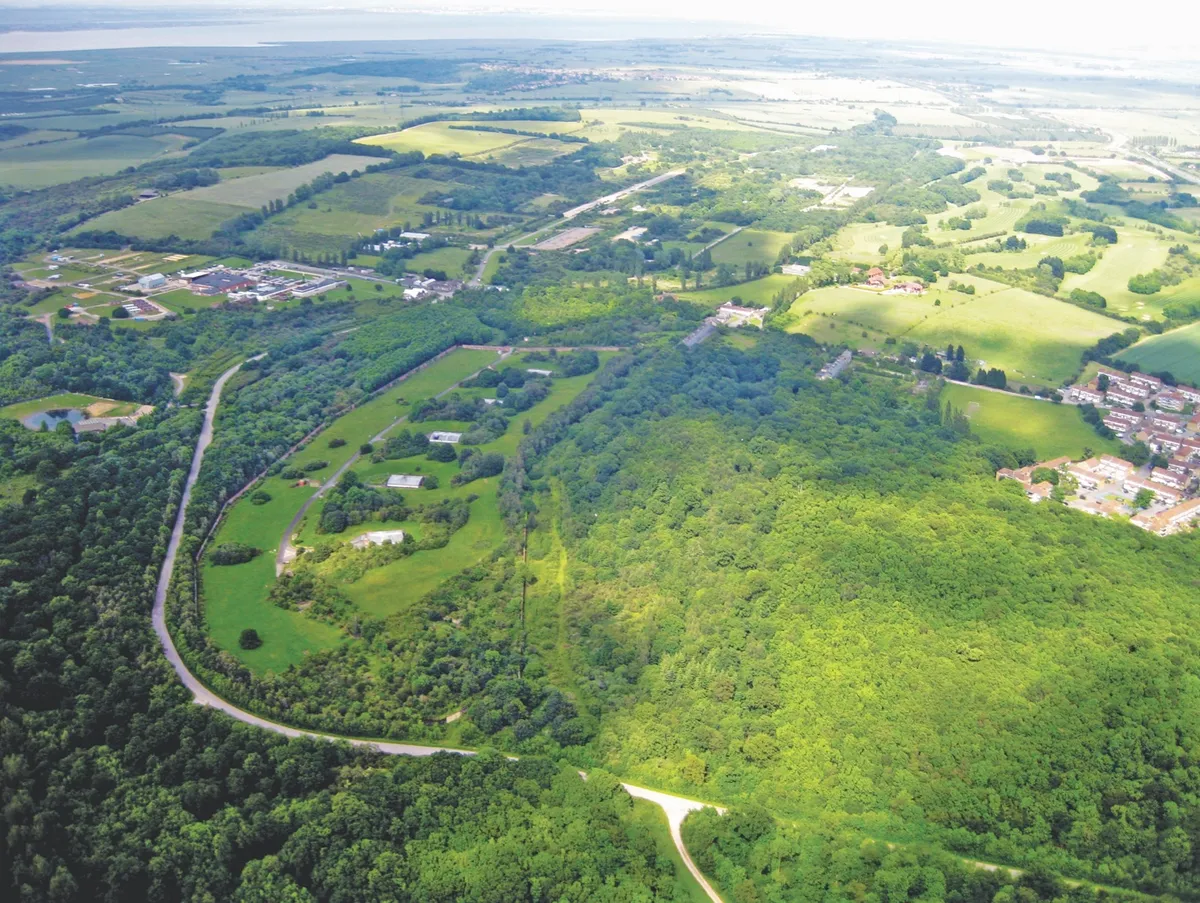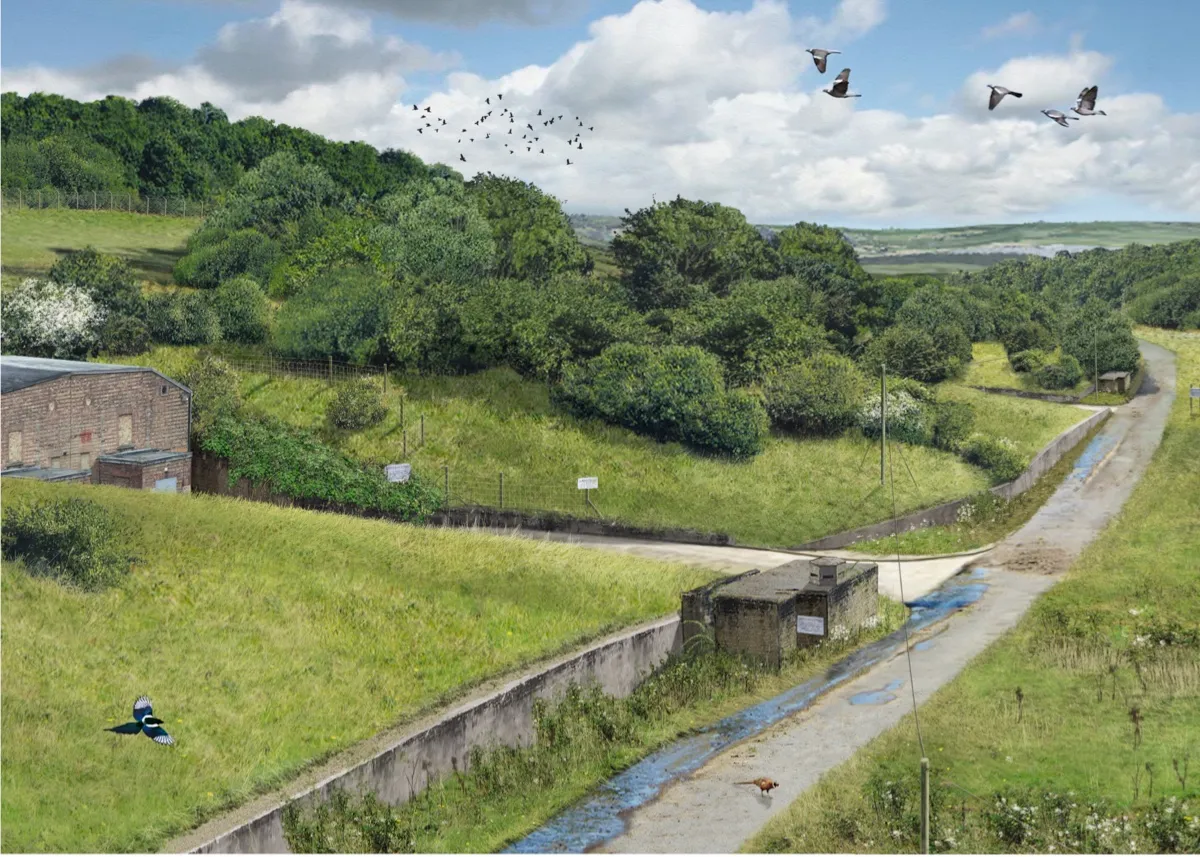A ‘watch’ is the collective noun for nightingales. The term derives from the way nightingales sing from dawn until dusk and into the hours of darkness, keeping watch.
The birds arrive in spring from West Africa, bringing with them a beautiful song that has inspired poets and musicians from the many cultures that the birds have mesmerised over the centuries.
Learn more about nightingales in our expert guide, including how to identity, their song, and why the species is under threat.
When do nightingales return to Britain?
Nightingales start to return to Britain in mid-April, with most back by early to mid May. The males start singing as soon as they return and continue into early June.

Brown as brogues, lodged in the undergrowth, male nightingales remain inconspicuous while their song, or gale – galan is Old English for ‘sing’ and galinn is Old Norse for ‘bewitch’ – ventures into darkness as a sonic beacon to enchant female nightingales and, indirectly, human listeners. This combination of performance, beauty, romantic love and nocturnal vigil creates a mythic power that makes nightingales unique among songbirds.
What does a nightingale sound like?
Its musicality may appeal to human senses but ‘song’ feels like a shorthand description of what the nightingale actually does. The sound comes from the syrinx, an instrument similar to our larynx but closer to the bird’s heart and which produces an extraordinary range of high and low frequency notes. As feisty as a robin, as poetic as a thrush, the nightingale’s daytime song is beautiful enough – but as darkness falls and other birds fall quiet, “great jagged stabs of lyrical music are thrown into the summer night sky,” in the words of poet Simon Armitage and broadcaster Tim Dee in their book, A Poetry of Birds.
The song is also very loud. Ornithologist Tim Birkhead recalls being kept awake all night by a nearby nightingale; at 90 decibels, he could feel its song resonating in his chest. Computer recordings of birdsong can detect sounds of less than one tenth of a second; human ears can’t pick them out but female birds certainly respond to these ‘sexy-syllables’.
Although we don’t fully understand nightingale song, it has an emotional effect. And with a shocking 90% of the nightingale population wiped out in Britain, that song now carries a powerful message of loss, heard by poet Peter Reading as “a cadence of ominous harmony… like a tolling”. Although we don’t fully understand nightingale song, it has an emotional effect.
Best places to hear a nightingale sing in spring
Why is the nightingale under threat?
Changes in farming, the structure of the countryside here and in their wintering grounds in West Africa, hazards on migration journeys and other factors mean that the range of nightingales in Britain is shrinking rapidly. Intimately hefted to the patch they come back to breed in, they have not returned to the “homes of love” from which they have been driven. Britain’s nightingales are now largely confined to enclaves in the southeast corner of England.

Where can nightingales be seen?
Their stronghold watch is Lodge Hill on the Hoo Peninsula, an ex-Ministry of Defence property between the estuaries of Thames and Medway in north Kent.
This secret valley, guarded, fenced off from the outside world, with its empty roads through ghost streets, scrubby woodland, open grass and scattered ponds, is ideal for nightingales. Its many and varied habitats provide stages for singers, concealment for nests and a complex of edges between them for foraging ants, beetles and other ground-living invertebrates that feed the youngsters.

Countless generations of nightingales were born here before the MoD and not only survived but also ironically thrived in 150 years of soldiers preparing for war in distant lands. Now the army has evacuated, a home-grown conflict lays siege to Lodge Hill. Despite holding the highest breeding population of nightingales in the country, Lodge Hill was earmarked by Medway council for development: 5,000 new houses.
After years of controversy, a public enquiry was scheduled for March 2018 to decide whether or not to build houses on 80% of the 144 hectares of Lodge Hill. The enquiry was abandoned after the plans were withdrawn in September 2017, but new plans for a scaled-down 2,000-home development were submitted in march 2018.
“If we can’t love nightingales, what can we love?” asks Adrian Thomas of the RSPB, manager of the Save Lodge Hill Campaign. “Some local politicians are confused about the legal protection for Lodge Hill,” he says. “It is a Site of Special Scientific Interest, one of the top English designations for English sites of priority concern for wildlife. Destroying it would set a very dangerous precedent.”
Gill Moore of the Friends of the North Kent Marshes said: “Medway Council says it wants the area to be noted for its stunning natural assets. We hope that councillors come to appreciate that having the best place for nightingales in the country is exactly that – something for Medway to be proud of.”
Miles King, of the organisation People Need Nature, says: “Lodge Hill is an incredibly inspiring place – it’s a great pity that so few people can visit it. If the site is saved from having a new town built on it, then it should be made more accessible to the public. It already has a wild feel to it. Why not introduce some wild grazers, like Exmoor ponies, wild cattle or even European bison to help maintain the dynamic mosaic of grassland, scrub and woodland that nightingales depend on? Lodge Hill could become a place for people to enjoy nature and understand its military history.”